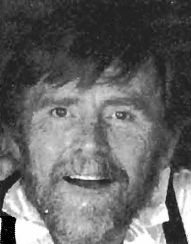


Editorial
Editorial

Distribution of the first issue of the IUCr Newsletter was delayed for a number of reasons including developing formats, securing mailing permits, and organizing the mailing list. The desktop copy was ready for the printer (Lancaster Press, Inc., Lancaster, PA) on Dec. 23. With the disruption of the holidays the print run was not completed until Jan. 18. Due to delays in securing a 2nd class mail permit from the US postal service, individual copies could not be mailed from Lancaster Press until Jan. 29. A batch of 4,572 copies was shipped air freight to the UK from whence they were broken down for further distribution to Europe, the Mid-East, and Africa. Another 1,557 copies were shipped to Singapore for reposting to Asia, Oceania, Australia, etc. Copies reached crystallographers in the US on Feb. 9, in the United Kingdom on Feb. 16, in Canada on Feb. 19, in Moscow on Mar. 1, and in Italy on Mar. 3. I received no feedback from other countries and I would appreciate hearing when copies of this issue reached India, Japan, China, Australia, South Africa, Brazil, Hungary, and the rest of the 34 countries to which it is being mailed.
I want to express my appreciation to six people without whose exceptional talent and wholehearted cooperation the first issue of the IUCr Newsletter could not have been produced and distributed. Marcia Vair, the Executive Secretary of the American Crystallographic Association and Sandra Finken, Sr. Secretary par excellence of the Medical Foundation of Buffalo, gathered and assembled articles, deciphered my atrocious handwriting, typed, re-typed, condensed, and re-re-typed all of the material for the first issue. I appreciate the indulgence of the ACA in allowing me to call upon the assistance of M. Vair for the first issue. From this issue forward primary responsibility for those tasks rests with Sandi Finken. I also wish to thank Jane F. Griffin who read all the copy, corrected my abysmal spelling and punctuation, and provided good council.
Linda Katz of the American Institute of Physics (AIP) took the text from disk to desktop and demonstrated remarkable creativity in dealing with the rather mundane material and exceptional forbearance in dealing with the rather wacko editor.
I am deeply indebted to people on both sides of the Atlantic Ocean who put together a mailing list in a suitable format so that the first issue could reach a majority of the crystallographers listed in the 1990 World Directory. Brian McMahon at the IUCr in Chester and Chris Lloyd, Production Systems Manager at AIP, responded admirably when the problem of the mailing list was dumped in their laps without warning and their heroic efforts brought order out of chaos via e-mail. Since no provision has been made for maintenance of the mailing list we shall have to muddle through until the new electronic edition of the World Directory is available some time in 1993 or 1994. Until then National Committees or Crystallographic Associations of individual countries who wish to improve IUCr Newsletter delivery in their country may do so by providing mailing labels with accurate addresses to the editor, or by requesting a bulk shipment of copies to be posted in their own country at their own expense.
The debate concerning the relevance of structural data derived from X-ray analysis to molecular properties and behavior in vitro and in vivo rages on. I call to your attention a recent example that appeared as the cover story in the Feb. 22 issue of Chemical and Engineering News, the official news magazine of the American Chemical Society.
J. Kraut and H. Pelletier published the crystal structure determination of a complex of two natural electron transfer partners cytochrome c and cytochrome c peroxidase, and described a highly plausible electron transfer pathway in the complex [Science 258, 1748 (1992)]. However, P.L. Dutton, a professor of biochemistry in Philadelphia, PA questions whether such "pathways" actually exist. I quote from the article, "Dutton maintains that 'the cyt c-CCP complex almost certainly adopts a variety of subtly different conformations under physiological conditions rather than one unique structure that permits electron transfer to occur'." Strictly speaking, the X-ray determination is not a unique structure but an average structure of many subtly different conformations reflected in the atomic displacement parameters. This ensemble of structures almost certainly approximates conformations near a local, if not global, minimum energy conformation. The fact that Kraut and Pelletier succeeded in preparing single crystals of the complex and that the molecules come together in the complex in such a way as to suggest a pathway from electron transfer is persuasive evidence that such pathways exist and are relevant. One of the advantages of crystallography is that it can provide reliable models of relatively stable structures and their intra- and intermolecular associations upon which to postulate the basis for properties and mechanisms. We can "observe" molecular interaction on an atomic scale. It seems disingenuous to dismiss these most reliable of representations as mere artifacts of the solid state. There are none so blind as those who will not see. I would hope that this Newsletter could provide a forum for discussion of important and controversial issues in the field of crystallography.
William L. Duax, Ph.D.Editor


